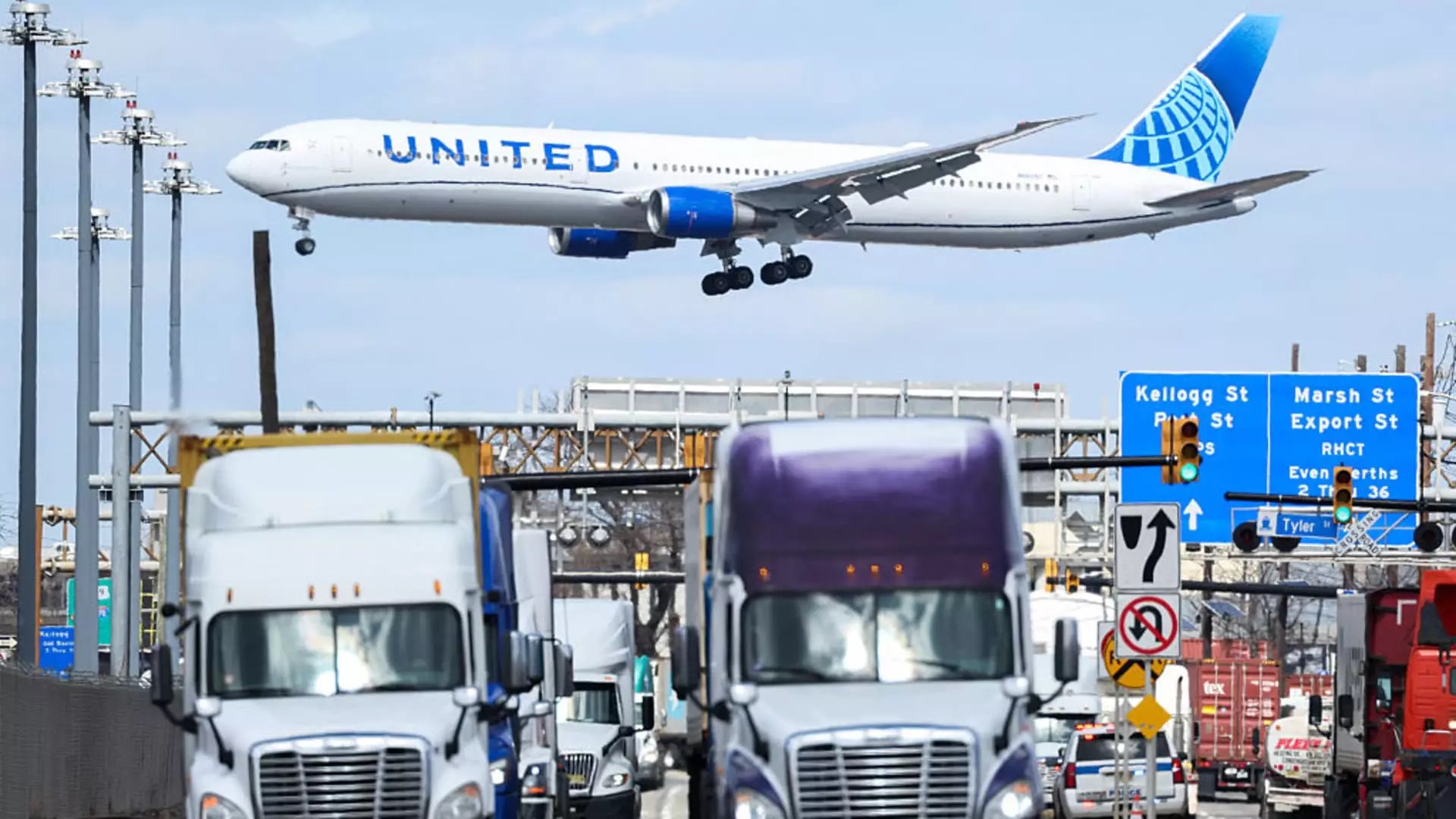United Airlines recently took a bold stance, maintaining its full-year forecast while also preparing for the worst-case scenario: a recession. The carrier’s conscientious decision to provide two distinct earnings projections illustrates a high awareness of the unpredictable nature of the current economic environment. Describing the economy as “impossible to predict,” United Airlines showcases a realism that, in a time of economic volatility, is both refreshing and necessary. It beckons the question: Can corporate forecasting align with the tumultuous realities imposed by external factors, like geopolitical instability or inflation pressures?
While the forecasted earnings have a promising range of $11.50 to $13.50 per share, the cautionary tone in reducing expectations to between $7 and $9 per share in the event of a recession is telling. It highlights an essential growing trend among corporations—hedging bets while racing to remain attractive to investors. The idea of such a stark contrast based on potential economic downturns illuminates the delicate balance in corporate strategy today.
The Flight Capacity Conundrum
United’s decision to cut domestic flights by approximately 4% starting this summer due to lackluster demand raises significant concerns about the market’s temperature. When domestic flights are minimized, it signals that the airline anticipates a growing consumer hesitance that may be a reflection of both buyer confidence and rising costs. The positive aspect, however, is reflected in their continued commitment to maximizing international routes, where demand remains robust.
The ability to pivot towards profitable international destinations while managing domestic capacity reveals a resilience in United’s operations. It may just indicate a newfound agility in counteracting negative market trends. More importantly, reducing flight schedules—not to be confused with cutting quality—demonstrates discipline in a sector often plagued by overcapacity and price wars. The air travel industry is notorious for thin margins; hence, such a strategic move could bolster United’s standing in a cutthroat environment where efficiency is paramount.
Profit Amid Complications
United Airlines recorded a noteworthy profit of $387 million in the first quarter, showcasing its ability to rebound from a prior $124 million loss. This shift indicates not just recovery but perhaps also strategic positioning—an admirable feat amid economic uncertainties. Nonetheless, this apparent success should invite scrutiny. How sustainable is this profitability, especially as international returns on investment appear to dilute a grim domestic outlook?
The company’s adjusted earnings of 91 cents per share surpassed the anticipated 76 cents, amidst criticisms of Wall Street’s often myopic forecasts. However, the slight dip in unit revenue from domestic flights—down 3.9%—suggests that profitability may require a laser focus on premium services and international sales to stabilize future revenues. Amid the tumult of consumer behavior shifting due to rising living costs, will United Airlines adapt quickly enough to maintain or enhance margins?
Industry Trends and Competitive Edge
Interestingly, United Airlines isn’t alone in acknowledging an uncertain future; rival Delta Air Lines has also expressed hesitancy to reaffirm its full-year outlook. This phenomenon of cautious optimism among major players in the airline industry hints at an underlying anxiety rippling through corporate boardrooms. The challenge lies in how these airlines can capitalize on consumer trends leaning towards premium offerings. As affluent travelers increasingly seek out premium-cabin experiences, United’s strategy to double down on international routes seems wise.
The hunger for higher-end travel experiences can serve as a lifeline in rough economic waters. However, can a company stake its future on such a singular trend? Travelers’ willingness to pay more could aid in buoying profits, but it also exposes United to significant risks if economic conditions take a turn for the worse, leaving lower-income travelers behind. This segment of the market faces increasing limitations, and how United navigates this landscape may very well determine its long-term success.
The airline industry’s future is still in flux, characterized by a mix of cautious optimism and strategic pivots. United Airlines’ ability to manage flight capacity, embrace premium offerings, and forecast with transparency amidst unpredictability will shape its trajectory. However, only time will reveal the true mettle of this storied carrier in the face of mounting challenges.


Leave a Reply